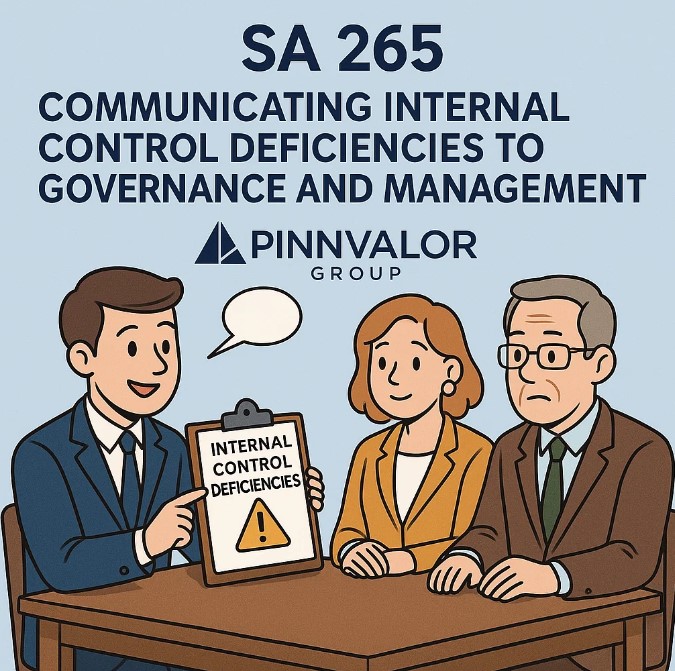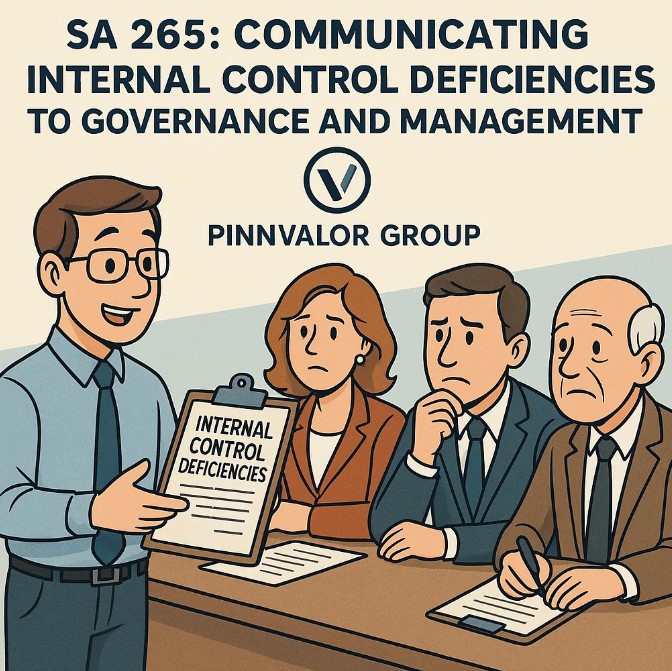
SA 265: Communicating Internal Control Deficiencies to Governance and Management
In the landscape of auditing standards, SA 265 plays a crucial role in enhancing transparency and accountability. Titled "Communicating Deficiencies in Internal Control to Those Charged with Governance and Management", this Standard on Auditing (SA), issued by the Institute of Chartered Accountants of India (ICAI), outlines the auditor’s responsibility to report significant internal control issues identified during the audit.
Is your organization ready to act on what your auditor isn't required to find—but must report?
Strong internal controls don't just protect finances—they protect reputations. SA 265 helps bring hidden weaknesses to light before they become headlines.
Understanding Internal Control Deficiencies
Internal controls are the mechanisms, rules, and procedures implemented by an organization to ensure the integrity of financial and accounting information, promote accountability, and prevent fraud. Deficiencies in internal control occur when:
- A control is missing or not properly designed.
- A properly designed control is not operating effectively.
SA 265 requires auditors to identify and communicate significant deficiencies to those charged with governance and to management.
Objective of SA 265
The primary objective of SA 265 is to ensure that:
- The auditor communicates appropriately and timely internal control deficiencies.
- Management and governance bodies are aware of these issues and can take corrective action.
This enhances the overall governance and risk management within the organization.
Scope of the Standard
SA 265 is applicable when an auditor identifies deficiencies in internal control during an audit of financial statements. It doesn’t require the auditor to search for every possible deficiency but mandates reporting if significant ones are found in the normal course of audit procedures.
Types of Deficiencies
SA 265 categorizes internal control issues into:
- Deficiency in Design
- Control necessary to meet the control objective is missing.
- Existing control is not properly designed.
- Deficiency in Operation
- Control is not operating as designed.
- Personnel performing the control lack the necessary authority or qualifications.
- Significant Deficiencies
These are important enough to merit the attention of those charged with governance. Factors to assess significance include:
- Likelihood and magnitude of misstatement.
- Risk of fraud.
- Degree of oversight by management.

Responsibilities of the Auditor
The auditor is required to:
- Identify internal control deficiencies observed during the audit.
- Evaluate whether any of these are significant.
- Communicate these to:
- Management — all deficiencies, regardless of severity.
- Those charged with governance — only significant deficiencies.
The communication should be done in writing, ideally by the date of the auditor’s report, or as soon as practicable afterward.
Contents of the Communication
The written communication should include:
- A description of the deficiencies and their potential impact.
- A clear distinction between:
- Significant deficiencies.
- Other less severe deficiencies.
- A statement that:
- The audit was not designed to identify all deficiencies.
- The communication is solely for the intended recipients (management and governance).
Benefits of SA 265 Compliance
- Encourages proactive correction of weaknesses.
- Enhances governance oversight and accountability.
- Supports transparency between the auditor and stakeholders.
- Contributes to stronger internal control frameworks within the entity.
Practical Example
Scenario: During the audit of XYZ Ltd., the auditor finds that cash disbursements are approved verbally without written documentation.
Action under SA 265:
- The auditor evaluates this as a significant deficiency.
- The issue is formally communicated to the Audit Committee and management.
- Recommendations may be provided, though not required by the standard.
Conclusion
SA 265 is more than a regulatory requirement—it’s a tool to foster trust and improve internal processes. By emphasizing timely and effective communication of internal control deficiencies, it helps organizations build resilience and ensure sound financial management. For auditors, adhering to SA 265 not only fulfills a professional duty but also contributes meaningfully to organizational governance.
